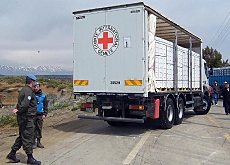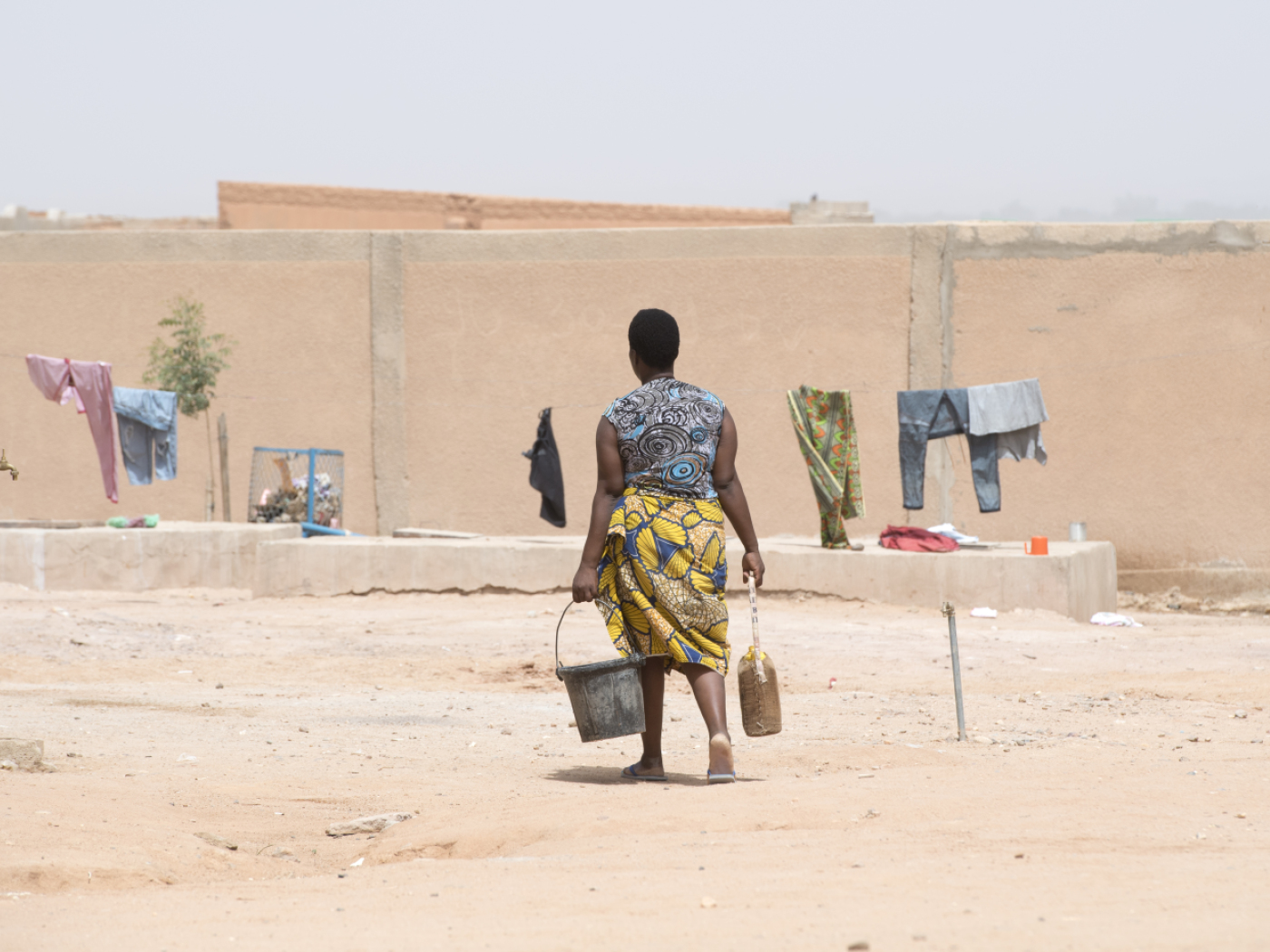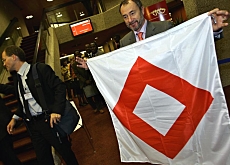New Red Cross emblem faces stormy ride

Syria has warned of a "confrontation" with the Red Cross movement over attempts to introduce a third humanitarian emblem at a two-day conference in Geneva.
Muslim countries are also likely to seize on a Swiss report expected to outline difficulties in implementing a cooperation agreement between the Israeli and Palestinian rescue services.
The 29th International Conference of the Red Cross and Red Crescent, which started on Tuesday, is due to decide on a resolution that would amend the movement’s statutes to include the new “red crystal” emblem and recognise the Palestinian Red Crescent Society.
Final approval of the red crystal would also clear the way for Israel’s Magen David Adom (MDA) to join the Red Cross movement after almost 60 years in isolation.
MDA has always refused to use either of the two globally recognised symbols – the red cross and the red crescent – opting instead for a red Star of David. If the resolution is adopted, Israel’s red star could be placed within the crystal.
The new emblem was approved by a majority of the 192 signatory states to the Geneva Conventions at a stormy diplomatic conference hosted by Switzerland in December. Twenty-seven mainly Muslim countries, including Syria, voted against and ten abstained.
The crystal must now be approved by the full movement, which includes all the signatory states, the 183 national Red Cross and Red Crescent Societies and the international bodies of the Red Cross.
Consensus?
Conference organisers are hoping that this time the red crystal will be adopted by consensus, but this is looking increasingly unlikely.
Syria’s ambassador to the United Nations in Geneva, Bashar Ja’afari, told swissinfo that an amendment had been tabled calling for the Syrian Red Crescent to be allowed humanitarian access to the Israeli-occupied Golan Heights.
Ja’afari added that foreign ministers of the 57 states that make up the Organization of the Islamic Conference (OIC) had signed a statement in Azerbaijan on Monday supporting Syria’s position.
“We are urging the ICRC [International Committee of the Red Cross] as well as the standing commission of the Red Cross and Red Crescent to take into account the amendment,” said Ja’afari. “If there is no consensus on this, that means they have chosen to have a confrontation.”
If a vote is called, a two-thirds majority of those present would be required for the resolution to be adopted.
Tempers could be further frayed when Switzerland publishes its findings on the Swiss-brokered accord between MDA and the Palestinian Red Crescent.
Under November’s historic agreement, the Israeli rescue service recognised its Palestinian counterpart as the sole emergency service to operate in the occupied territories.
Trouble ahead
But last week Swiss Foreign Minister Micheline Calmy-Rey, who held last-ditch talks in Israel ten days ago, admitted that things were not running smoothly.
“There is a problem with the way the accord between Israel and Palestinian aid societies is being put into effect on the ground,” she said.
Difficulties she cited included Palestinian ambulances getting through Israeli checkpoints and the registration of ambulances. The foreign ministry declined to comment on the contents of the report ahead of the meeting.
The Swiss-run ICRC said on Monday that it hoped the emblem issue was not about to become a political football.
“The last thing we want is for humanitarian interests to be subordinated to political considerations,” ICRC spokesman Ian Piper told swissinfo. “This is not about politics; this is about humanitarian action and we hope these imperatives will prevail over political considerations.”
Piper said the ICRC still hoped the resolution would be adopted by consensus but said everyone was prepared for a vote if necessary.
“We won’t know until the meeting opens. The critical thing will be the Swiss government report and we will [have to] see how people feel about it,” he added.
swissinfo, Adam Beaumont in Geneva
The signatory states to the Geneva Conventions – of which Switzerland is the depository – voted to adopt the “red crystal” at a diplomatic conference in Geneva in December.
98 countries voted in favour of the emblem, 27 against, with ten abstentions. Most of those who rejected the move were members of the OIC. Opponents also included Iran, China, North Korea and Cuba.
The red cross emblem, which was officially approved in 1864, is based on the Swiss flag with the colours reversed.
The red crescent was adopted during the war between Russia and the Ottoman Empire (1876-1878). It is based on the Turkish flag, with the colours switched.
Some countries, such as Israel, have found it difficult to use either of the emblems. Hence the move to adopt an additional symbol that is free of any national, cultural, religious, political or ethnic connotations.

In compliance with the JTI standards
More: SWI swissinfo.ch certified by the Journalism Trust Initiative










You can find an overview of ongoing debates with our journalists here . Please join us!
If you want to start a conversation about a topic raised in this article or want to report factual errors, email us at english@swissinfo.ch.